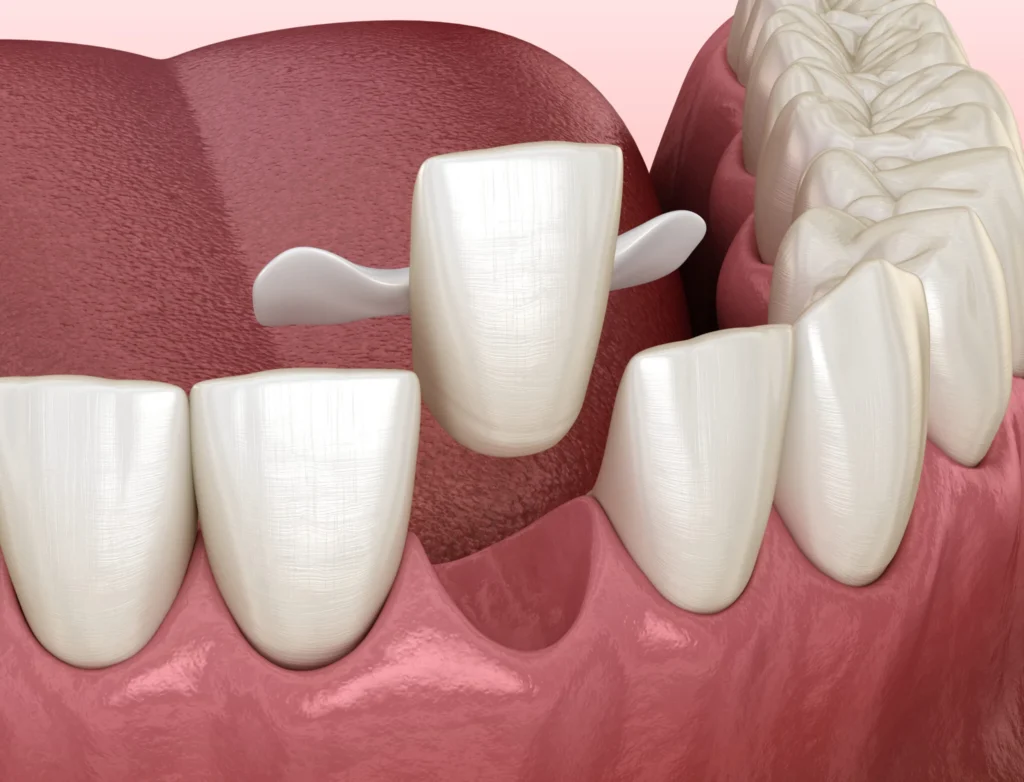Click to call
6 Treatment Options for missing Tooth/ Teeth
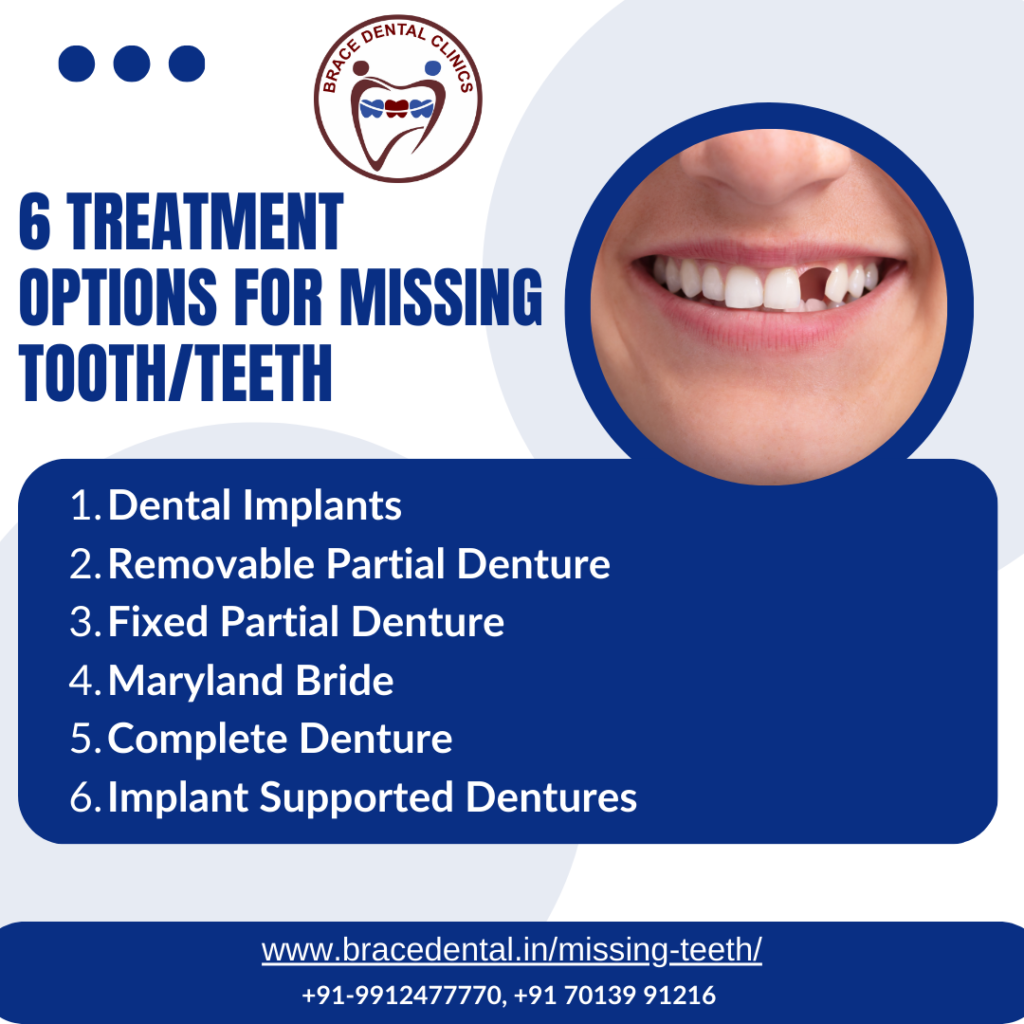
Dental Implants
Dental implants are like artificial tooth roots that are placed into your jawbone. They are made from titanium, which is a material that your body accepts well. Over time, these implants fuse with your bone, creating a strong foundation for replacement teeth. Once healed, a crown that looks and feels like a natural tooth is attached to the implant. This option is great for those looking for a long-lasting solution that helps maintain jaw strength and facial structure.
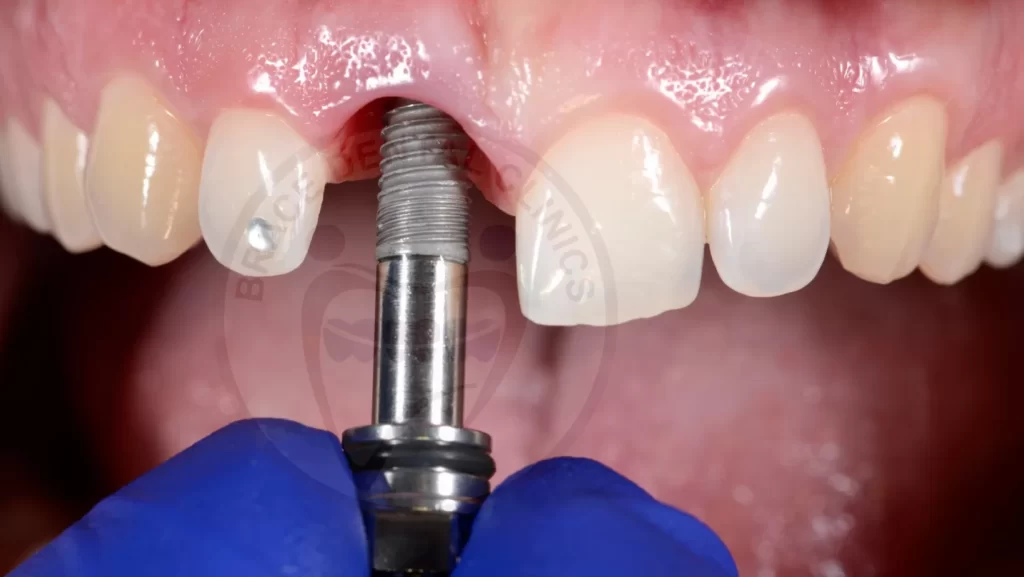
Fixed Partial Denture (FPD)
Think of a bridge as a way to fill a gap left by missing teeth, using the teeth on either side as support. These supporting teeth are prepared and covered with crowns, and a replacement tooth (or teeth) is attached in between. Fixed bridges are cemented into place, so they don’t come out. This is a good option if the teeth next to the gap are healthy enough to hold the bridge.
Removable Partial Denture(RPD)
Partial dentures are an option when you have some natural teeth remaining. These dentures have replacement teeth attached to a gum-colored plastic base, which is sometimes connected by a metal framework that holds the denture in place in the mouth. They are less expensive than implants and bridges and are easy to repair if broken.
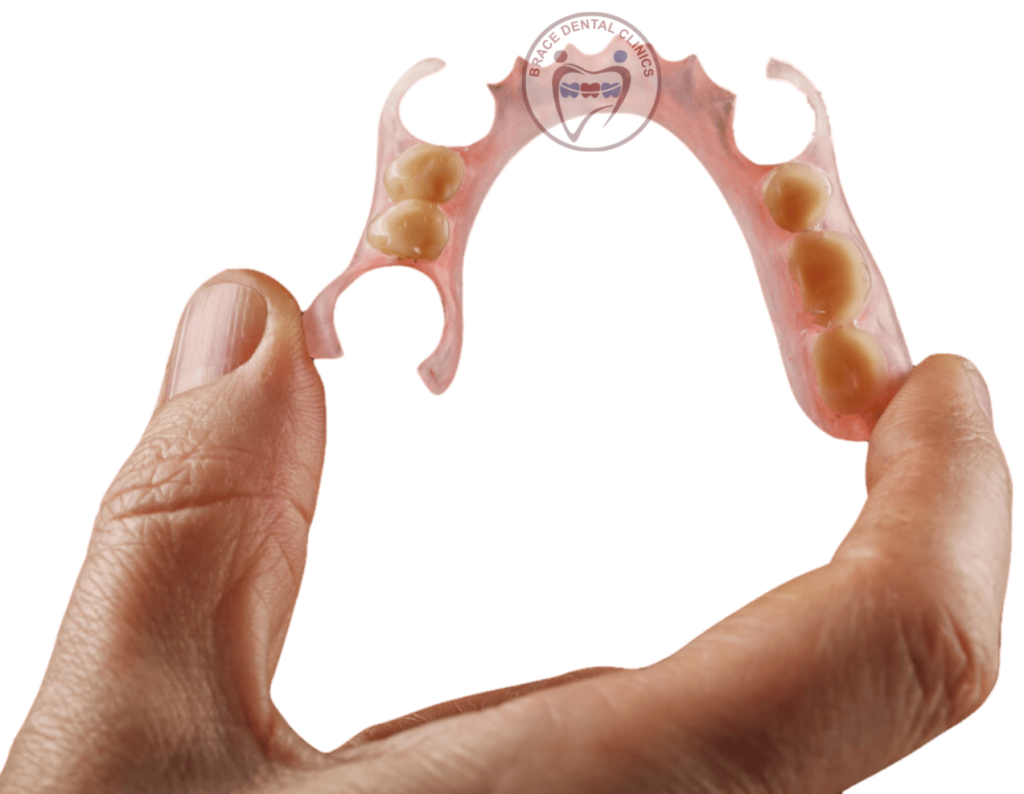
Complete Denture (CD)
When you’re missing all of your teeth in an arch (either upper or lower), complete dentures can restore your smile and mouth function. These dentures sit on top of the gums and are removable for cleaning. While they take some getting used to and might affect taste and speech initially, they are a cost-effective way to replace all teeth.
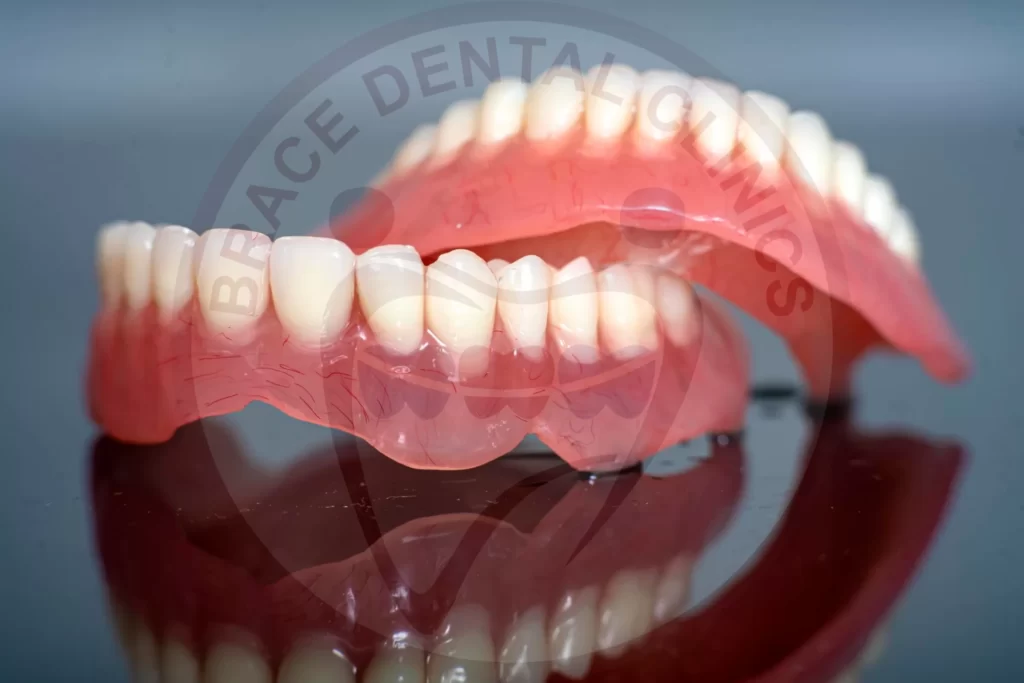
Implant Supported Denture
These are a more stable version of traditional dentures. Instead of just resting on the gums, these dentures are supported by and attached to implants. Usually, a few implants are placed in the jawbone, and the denture snaps onto these for a secure fit. This reduces the movement of the denture, improving comfort and the ability to eat and speak.
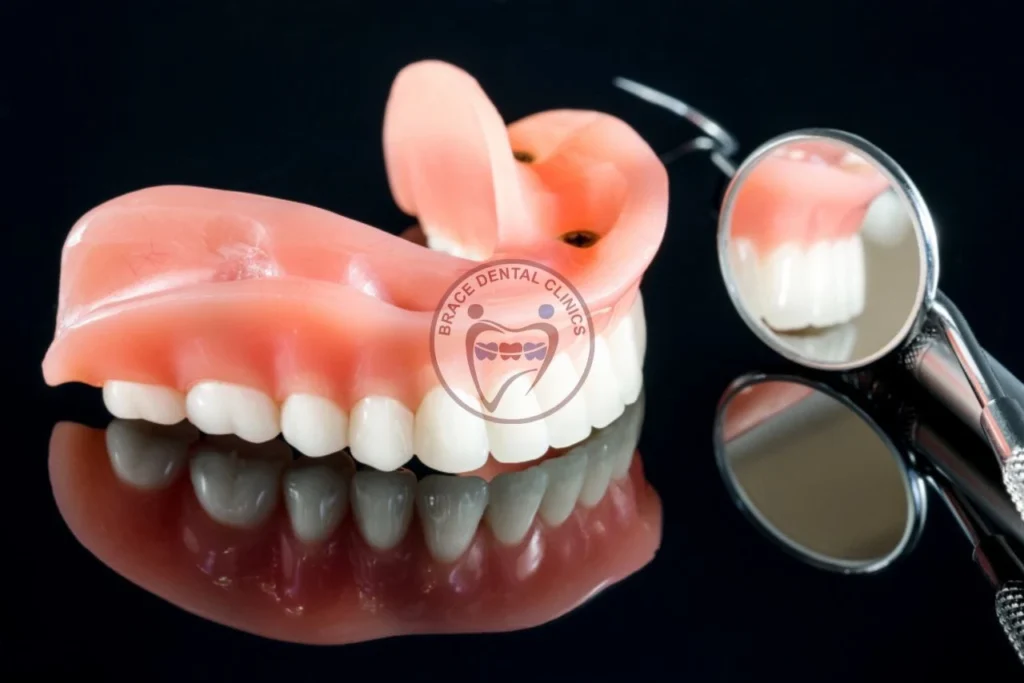
Maryland Bridge
A Maryland bridge is often used to replace front teeth. It consists of a false tooth with small metal or porcelain wings on either side. These wings are bonded to the back of the adjacent natural teeth. This less invasive option doesn’t require filing down the adjacent teeth as much as traditional bridges. It’s a good choice if the surrounding teeth are healthy and free from large fillings.
